Rustam Minnikhanov: ''Scientists should be engaged in science, research, not lectures''
7 Days: from the Russian Venture Forum to the inception of necropolis tourism in Kazan
Why do Russian investors rarely invest in innovations? How is the work of a modern incinerator plant arranged? Are there potentials to develop necropolis tourism in Kazan? These and other questions formed the basis of an episode of the weekly informational and analytical programme 7 Days, broadcasted on TNV channel. Read more in the review of Realnoe Vremya.
Russia has little demand for innovations
Kazan hosted the annual Russian Venture Forum last week. As usual, the event gathered a great number of speakers of the highest level — representatives of leading venture funds, large investors, entrepreneurs and business angels from Russia, the USA, China, Singapore and other countries.
The forum became not only a platform for the exchange of contacts, but also an opportunity for companies to present their developments. It is important that the developments were presented not in the form of abstract inventions, but ready to use innovative products. For example, Alexander Kiyanitsa from St. Petersburg found an alternative to noisy and expensive in operation fuel generators — home energy storage unit of new generation, with which his company is already ready to enter the market of Tatarstan.
Marat Dusayev, an IT developer from Kazan, promotes the project Elektronnoe Stado (''Electronic herd'' from Russian) — a service that monitors the number, health and quality of care for cows. Marat suggests to go further and to include shops in this process. His new development will allow the buyer to find out cows of what farms gave milk, as well as other characteristics of a product.
Another development in the field of information technology, this time by IT specialists from Naberezhnye Chelny, — a mobile application that will help to plan the work schedule competently. The development can be interesting for busy and business people, to whom the programme will choose from hundreds of meetings and contacts really necessary and useful ones.
But one should understand that against the background of developed countries, our achievements in the field of venture capital investments are almost imperceptible. The problem is, experts say, that in Russia, in fact, there is no demand for innovations. And if investors can still understand projects in IT sphere, then Russian business angels are not ready to invest in pharmaceuticals, medicine, breakthrough ideas in aircraft construction and mechanical engineering.
''There is no real interest in innovations. There is no motivation. Maybe the reason is that there is no full confidence in innovations produced in Russia,'' suggested Aide to the President of the Russian Federation Andrey Fursenko at a plenary session.
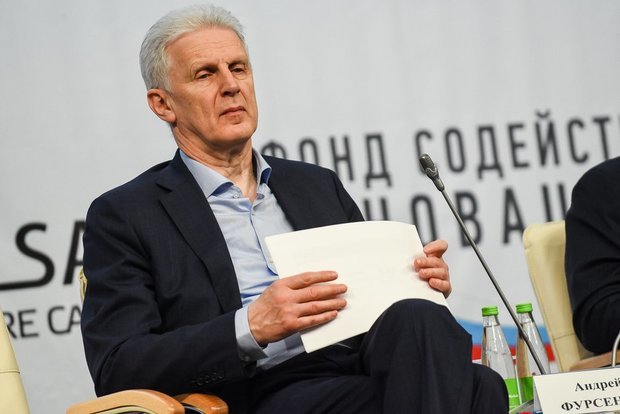
Technological projects are quite long, says the managing director at Global Technology Capital, Alexandra Johnson. A person can invest in an enterprise that will be reimbursed in three months. Or he will give it to an entrepreneur with whom he would have additional troubles. Five years will pass, and he will still lose money, Mrs Johnson says.
This is only in theory the implementation of venture projects is a beautiful story of success, when the inventor and the investor find each other. The investor gives him money and after some short time the project starts generating crazy profits. In reality, everything is much more difficult.
For example, 150 million rubles were spent on the implementation of an industrial drone project by Aviaresheniya company. Three years of tests, refinements, experimentations. If it was any other business, it would have closed long ago. But this project continued to live and, moreover, it is developing. A couple of years ago, Dmitry's team included several like-minded people, today it is a team of professionals numbering 35 people. Additional opportunities appeared after receiving a grant of the National technology initiative for 240 million rubles. It was very difficult to obtain it, says Dmitry Arsentyev, the director general of the company. But now the prospects are good. Oilmen, especially those working in the Far North, have become seriously interested in the production. For them such a drone — just an indispensable thing for cargo delivery.
It should be understood that the creation of a coherent system of support of innovative projects will take years and even decades. There are state funds now, but, first, their volumes are limited. Second, they are almost all concentrated in Moscow.
Russia is a huge country, it has enormous resources and a rich culture. This is an ideal platform for the implementation of many projects. But the peculiarity of our country is that all business processes are concentrated in Moscow, says Dirk Ahlborn, CEO at Hyperloop Transportation Technologies.
Tatarstan could well become another breakthrough platform in the field of innovation and venture investment, which, in fact, is already happening. Rustam Minnikhanov believes that it remains to preserve and better triple the pace of development. To do this, it is necessary to make more active use of opportunities, including of higher school.
''Scientists at university should be engaged in science, research, not lectures. If you manage to break it, then our universities will be the centre of formation of innovations,'' concluded Rustam Minnikhanov.
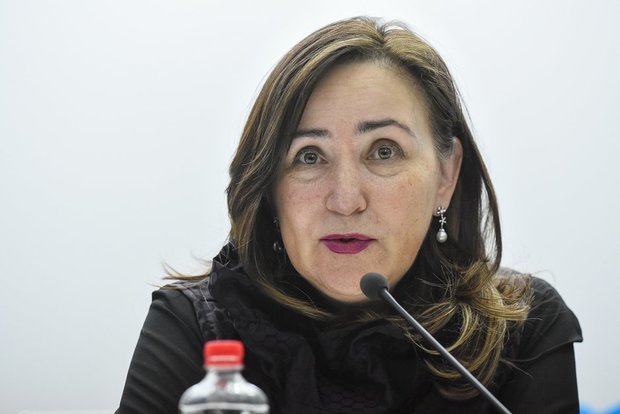
How the incinerator plant's work is arranged
A wave of protests against the construction of the incinerator plant has reached Aviastroitelny district of Kazan. Another rally was held in the Soviet Wings Park. The previous meeting against the construction of the incinerator plant was held on April 15 in the village of Osinovo. In this regard, correspondents of 7 Days tried to understand — what is a modern incineration plant.
Humankind learned to extract energy from waste a long time ago, the first incinerator in the world was built in the UK in 1874. It was impossible then to imagine the fact that thermal power plants operating on fuel from household waste could be safe for human health.
Between the heat power plant working on debris and the station using natural gas as fuel, in fact, there is a little difference. Inside, the incinerator looks exactly the same. The difference, in fact, is in fuel. The thermal power station has no flue gas cleaning system, gas is burned. In a day, the enterprise lets out in the atmosphere the same quantity of harmful substances that three cars do in trips around the city for the same 24 hours.
So, the principle is the same. We have fuel, we can heat water and get heat, we can use the energy of generated steam to rotate the turbine, which produces electricity. For Kazan, the contracted capacity is 55 MW. It is several times less than that of any thermal power plant in Kazan, but it is enough to serve tens of thousands of households.
Now about the differences. Flue gas cleaning system is one third of the total cost of the plant. What happens here? Atmospheric combustion – it is when the fuel is only garbage and oxygen, air. The temperature in the boiler — 1200-1260 degrees. It is ''deadly'' for at least any of a couple hundred chemical compounds of dioxins.
''Dioxins begin to disintegrate at temperatures above 750 degrees. And at a temperature of 1,200 they are completely destroyed,'' explains Akhmet Mazgarov, a member of the Academy of Sciences of the Republic of Tatarstan.
The danger of reincarnation of dioxins still exists — when gases are cooled at the boiler outlet. But the cleaning system has long been brought to perfection. Urea, slaked lime, activated carbon — these reagents absorb residual dioxins, furans, mercury, and heavy metals.
Fabric or bag filters — huge dust collectors — all the dust will remain here and will not fly into the pipe. All this is the so-called dry cleaning. The waste incineration plant has no waste water. Therefore, groundwater is not threatened.
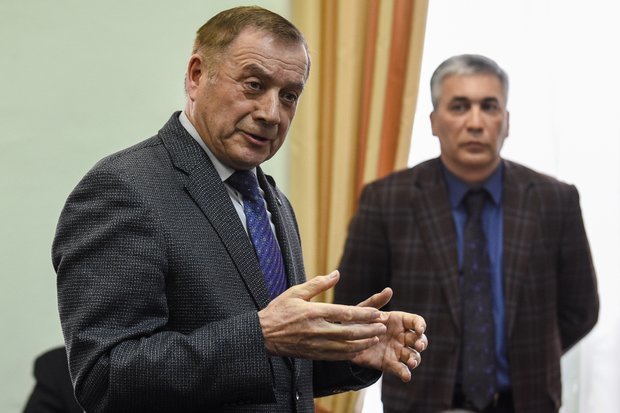
That is why incineration plants or thermal power plants are so often located in the city or in the immediate vicinity of residential buildings. They are very similar in content but vary widely in form. No two are the same.
The plant also has waste — slag and ash. The first and most important – there is no landfill on the territory and around the plant. Slag, which is not more toxic than bitumen, is quite applicable in road construction. Ash, too. There will be no sorting line at the plant. It should be built by 2022. The plant will have a radiation, chemical control, metal detectors. Everything that will get here depends on the residents.
Debts, ruin and a tarnished reputation
According to Tatarstanstat, today the republic has almost 170,000 subjects of small and medium business. Out of them, 44% — small businesses, 0,26% — medium-sized companies, and 55% — individual entrepreneurs. In Tatarstan, there is practically no serious layer of medium-sized businesses.
Simplistically, the structure of the economy of the Republic of Tatarstan looks like this: there is a powerful sector of large industrial companies, it develops successfully in general. There is a small and micro business, which has a lot of problems and does not pretend to be a serious weight in the economy, and there is a thin layer of medium-sized companies. The problem is that small entrepreneurs do not develop into the category of medium-sized, and then further up — to large companies.
''Technoparks and municipal industrial parks, in which impressive funds are invested, could become sites for such growth,'' said the presenter of the programme, Timur Bikmurzin. ''Alas, but so far there is no desired effect the authorities hope for,'' he said.
There are especially many questions to municipal industrial sites. In ten areas there are no such sites at all, in six — they exist only for a tick, but, in fact, they do not work. In Nurlatsky District, for example, the investor left only problems and debts after him. Correspondents of 7 Days have looked into the issue.
The villagers of Tyurnyasevo in Nurlatsky District never understood what had happened. The only investor in the new industrial park, the opening of which was trumpeted all over Tatarstan, worked exactly six months.
Locals say that the president went back to Tashkent, all the equipment was removed before his departure. The head of the district was promoted — Ravil Kuzyurov became minister of forestry this February. In Tyurnyasevo, there have left only discouraged residents and millions in debt.
''Initially I was allocated 17,000 for 17 people. I allocated 1,000 for each. At the end of March, I already myself asked for a salary. I was given 5,000 rubles, which I had to divide between 17 people,'' says Tatyana Lizunova, an employee of the garment manufacture.
According to Tatyana, the resident of the industrial park never signed an employment contract with any of 37 workers, including with her. It turns out that they worked illegally at the enterprise, which was often visited by high-ranking guests from Kazan. Now she has no job, the working experience has been interrupted, she cannot be registered at labour exchange. Tatyana is camping on the doorsteps of the offices of local officials — those who promised her a decent salary and a quiet and happy life in the countryside.
''I have no proof. Everyone is already angry, we are hoping for nothing because we have no protection,'' says Lizunova.
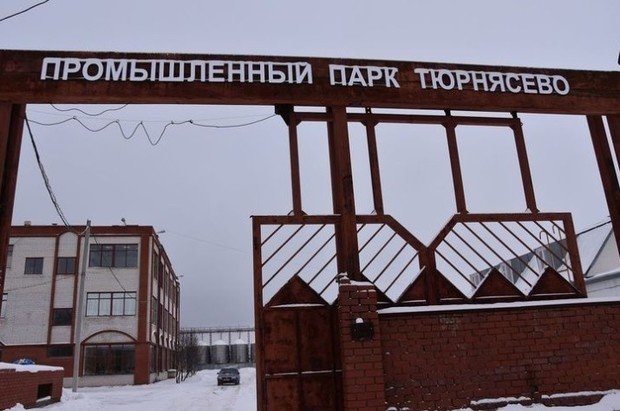
As the woman says, the staff sewed a total of 70 coats over all this time. And with great difficulty. The resident had serious problems with raw materials, they had to wait for fabric for weeks. But on paper everything was running smoothly. According to reports submitted by the district to the ministry of economy, in 2017 the residents of the industrial site shipped products at more than 12 million rubles. It turns out that each coat cost about 170,000 rubles. Moreover, the resident, as written in the reports, regularly paid taxes. 820,000 rubles allegedly were allocated to the budgets of different levels. The new leadership of the district hears about such figures for the first time.
Khusan Agmazov, the director of the company, a resident of the industrial site Nurtrade, enjoyed a special attitude from the former leadership of the district. According to sources, in 2017 in Nurlatsky District there was created the management company Argus, the founder of which was Khusan Agzamov. Municipal areas, over 6 hectares of land, and buildings of the former distillery were leased to the management company for a period of 49 years. What is more, in the first three years, according to the terms of the contract, the rent was not charged. Khusan Agzamov eventually becomes the sole founder of the resident company. Now both the resident and the management company are represented by one person. Six months later, the company incurred debts for electricity. According to the new leadership of the district, the contract with the electricity supply organization was concluded not directly with the resident of the industrial park or with the management company, but through the municipal enterprise — the housing and communal services Blagoustroystvo.
According to the latest data, this week Agzamov has come to Kazan with the intention to continue the cooperation. The new leadership of the district is ready to forgive and understand everything.
Nurlatsky District is ready to accept Khusan Agzamov with usual hospitality, turning a blind eye to the violation of labour legislation by the resident, while local entrepreneurs could not even dream about such indulgences.
In 2016, Roman Chekmanov, a citizen of Russia, resident of the city of Nurlat, decided to start a meat production. But instead of working, he had to fight back in the courts against the annoying sanctions of the controllers, which flooded the enterprise with notifications about numerous violations.
The new production is idle, the trials continue. The business of Chekmaev was subject to unforeseen risks, to which, as businessmen say, no one is immune.
Problems of Tatarstan necropolis tourism
Tours around Arsky Cemetery has been resumed in Kazan. The unusual format is held biweekly by enthusiast, historian and writer Anatoly Yeldashev.
Anatoly Yeldashev is the author of popular books about cemeteries in Kazan. Hardly anyone knows Arsky Cemetery better than him. The local historian has given excursions here for more than a year. According to him, the interest in necropolis tourism has increased in Kazan. The tours are in great demand both among citizens and guests of the capital of the republic.
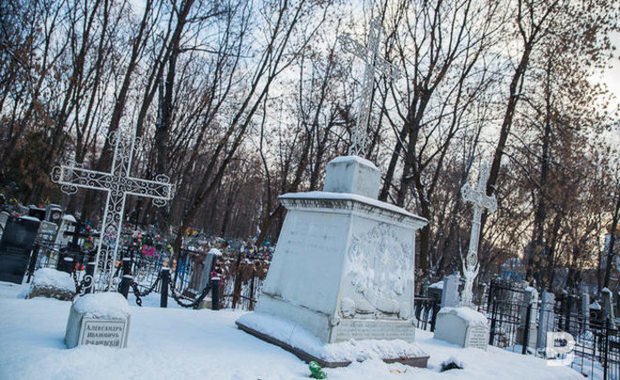
Yeldashev was first to sound the alarm.
''I addressed to the president of our republic in a letter, he responded quickly. We are losing our memory, old monuments, lattices, gravestones as a symbol of the gone era, undoubtedly, it is necessary to preserve,'' the local historian tells.
So there appeared the project Kazan Necropolis. The working group at Arsk Cemetery was headed by Lyubov Ageyeva, the editor of the educational newspaper Kazan Stories. Over a year and a half, the group have gone around the entire churchyard and examined the graves. At the moment, about 600 graves of historical value have been revealed.
The second working group at Novo-Tatar Cemetery was headed by the head of the department of historical and cultural heritage of the peoples of the Republic of Tatarstan at the Institute of History of the Academy of Sciences named after Mardzhani, Aydar Nogmanov. Fences – barriers — today are the main feature, both here and at the Arsk cemetery. And navigation. For example, to find the grave of famous theologian Shigabutdin Mardzhani is not easy without assistance. Lyubov Ageyeva and Aydar Nogmanov say that after the completion of the research work they will publish handbooks.
Novodevichy Cemetery is the most famous necropolis of Moscow. The churchyard is one of the hundred most beautiful and unique graves in the world, included in UNESCO World Heritage List. There is special aura and energy here. Undoubtedly, the fact that the monastery is nearby also affects.
Monuments are the works of art. Some of them have special engraving — QR Code. By reading the barcode with smartphone, you can get useful and interesting information. Every day at least 500 tourists visit Novodevichy Cemetery. The year it has been visited by about 400,000 people.
But it is best to walk through the cemetery with a guide. Igor Kozlov, the head of the cultural centre 21 Vek, famous Moscow guide, says that there are three tour formats: individual, group and thematic. The shortest tour lasts about an hour. The longest takes five hours. The average price — from 500 rubles. They say that Joseph Stalin used to come here very often, secretly. He long was standing and weeping at the grave of Nadezhda Alliluyeva. Today this grave is one of the most visited in the cemetery.
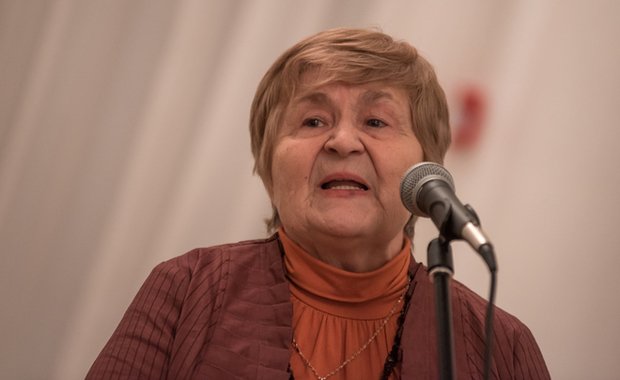
''The other day I was giving a tour around the paths of realisation of wishes. A lady broke down. An hour and a half later, she says, she had a brain explosion. She wanted to run to a bookstore, to buy books, watch programmes,'' says Kozlov. In this sense, Kazan has a lot to do. Lyubov Ageyeva shows the way to the monument to the rector of the Imperial Kazan University, Karl Fuchs. A group of tourists clearly coud not pass here. And the municipal unitary enterprise Ritual is not to blame. There is just no space to store inventory, there is no place to build cabins. It has already been proposed, like in Moscow, at the entrance to Arsky Cemetery to set a location diagram of the graves of famous people. But everything depends on money. So far, it has been taken the decision only to install special plate inscriptions on the monuments instead of QR Code and to engrave the inscriptions with a laser. The management of the municipal unitary enterprise Ritual agreed to do it for free. But the biggest pain in the neck at the moment — the condition of the monuments.
''Many difficulties are connected with that the law does not prescribe who must be responsible for the monuments, to allocate money,'' says Lyubov Ageyeva.
But the work on restoration is going little by little. Today, the crypt of famous Kazan merchant Yakov Shamov has been restored.
''The president allocated good money to conduct research on all cemeteries. We have one person who can help, he will walk around the city, see a problem, and it will begin to be solved before our eyes,'' Ageyeva believes.
Who creates documentary in Tatarstan
The creative association Panorama was established in Tatarstan twenty years ago. Over these years, the studio based on the regional television produced more than 500 films. It is historical, ethnographic, cultural pictures. Each project of Panorama was a real discovery. The films of the creative association became winners of numerous international festivals and competitions. Many of them were broadcasted on federal and foreign channels.
In the late '90s, Panorama began to create a series of films about the history of Kazan and Tatarstan. These were documentaries of a new level. With the elements of fiction film. Every detail was important for the authors of the film.
Archaeologist Fayaz Khuzin recalls that he had the honour to be not only a scientific expert of a film about millennial history of Kazan, but also to play an episodic role. According to him, these films were made at a time when people needed stories of their true history, and Panorama conducted this kind of cultural and historical likbez (a Russian abbreviation for ''likvidatsiya bezgramotnosti'', meaning ''elimination of illiteracy'' — was a campaign of eradication of illiteracy in Soviet Russia and Soviet Union in the 1920s and 1930s — editor's note).
It is in Panorama already known today writer Denis Osokin began to create a new series of documentary films about the peoples living in the area at the beginning of the 2000s. These films showed a different reality — unofficial, unpolished, very sensitive and real.
Andrey Kuzmin, a cameraman at Panorama, repeatedly shot the best scenes that would later go down in history. According to him, a documentary operator is the man who should always keep a finger on the pulse.
In recent years, the film crew of Panorama has shot a documentary series about the investigations of high-profile cases in Tatarstan called The Black Lake. Over 500 films in 20 years. Over these 20 years, the country has changed. Only the attitude to their profession of people who stand on the other side of the screen hasn't.